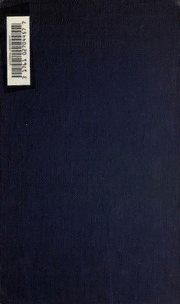
The swastika, the earliest known symbol, and its migrations : with observations on the migration of certain industries in prehistoric times PDF
Preview The swastika, the earliest known symbol, and its migrations : with observations on the migration of certain industries in prehistoric times
:LT) m ! \ STUDIA IN / Presented to THE LIBRARY of VICTORIA UNIVERSITY Toronto by Leslie G. Kilborn Cf. KlUBORJS PARAGON BOOK GALLERY 7neOrientalBookstore] ofAmeru 4N0EWEAYSOTR5K9l2h2.STN.REYEll THE SWASTIKA, THE EARLIEST KNOWN SYMBOL, AND ITS MIGRATIONS WITH OBSERVATIONS ; ON THE MIGRATION OF CERTAIN INDUSTRIES IN PREHISTORIC TIMES. THOMAS TVTXSCXN", Curator, Department of Prehistoric Anthropology, 17. $. Ndtionnl Museum. 757 THE SWASTIKA, THK EARLIEST K\OW\ SYMBOL, AXD ITS MIGRATIONS; WITH OBSERVATION OX TIIF MIGRATION OF <ERTAIX INDUSTRIES IX PREHISTORIC TIMES. By THOMAS WILSOX, Curator, DepartmentofPrehistoricAnthropology, V. $. NationalMuseum. PREFACE. An English gentleman, versed in prehistoric archaeology, visited me in the summer of 1894 arid during our conversation asked if we had 7 the Swastika in America. I answered, " and showed him two Yes," or threespecimens of it. He demandedifwehad anyliteratoreon the sniyect. I cited him De Mortillet, De Morgan, and Zmigrodzki, and he said, "Xo, I mean English or American." I began a search which proved almost futile,as even the word Swastika didnot appear insuch works as Worcesters or Websters dictionaries, the Encyclopedic Dic tionary, the Encyclopedia Britannica, Johnson s Universal Cyclo paedia, the Peoples Cyclopedia, nor Smith s Dictionary of Greek and Roman Antiquities, his Greek and Roman Biography and Mythology, or his Classical Dictionary. I also -searched, with the same results, Molletts Dictionary of Art and Archeology, Fairholts Dictionary of Terms inArt, "L ArtGothique,"byGonza, Perrot andChipiezs exten sive histories of Art in Egypt, in Chaldea and Assyria, and in Phe- nicia; also "The Cross, Ancient and Modern," by W. W. Blake, "The History ofthe Cross," byJohn Ashton; and a reprint ofa Dutch work byWildener. In theAmerican Encyclopediathedescriptioniserrone ous, while all the Century Dictionary says is, " Same as fylfot," and "Compare CruxAnsataand Gammadion." I thereupon concluded that this would be a good subject for presentation tothe Smithsonian Insti tution for "diffusion ofknowledge among men." The principal object of this paper has been to gather and put in a compact form such information as is obtainable concerning the Swas tika, leaving to others the task of adjustment of these facts and their 763 764 REPORT OF NATIONAL MUSEUM, 1894. arrangement into an harmonious theory. The only conclusion sought to be deduced from the facts stated is as to the possible migration in \/\ prehistoric times of the Swastika and similar objects. Xo conclusion is attempted as to the time or place of origin, or the primitive meaning of the Swastika, because these are considered to be lost in antiquity. The straight line, the circle, the cross, the triangle, are simple forms, easily made, and might have been invented and re-invented in every age of primitive man and in every quarter of the globe, each time being an independent invention, meaning much or little, meaning different things among different peoples or at different times among the jstime people; or they may have had no settled or definite meaning.. But the Swastikaw_asj)robablythe first to be madel with a definite indention and a continuous or consecutive meaning, the\ knowledge of which passed from person to person, from tribe to tribe, \ <f jfrom people to people, and from nation to nation, until, with possibly-J- changed meanings, it has finally circled the globe. ^^ There are many disputable questions broached inthis paper. The ithor is aware of the differences of opinion thereon among learned men, and he has not attempted to dispose of these questions in the few sentences employed in their announcement. He has been con servative and has sought to avoid dogmatic decisions of controverted questions. The antiquity of man, the locality of his origin, the time of his dispersion and the course of his migration, the origin of bronze and the course of its migration, all of which may be more or less involved in a discussion of the Swastika, are questions not to be I settled by the dogmatic assertions of any individual. Much of the information in this paper is original, and relates to pre historic more thanto moderntimes, and extends to nearly all thecoun tries of the globe. It is evident that the author mustdepend on other discoverers; therefore, all books, travels, writers, and students have been laid under contribution without scruple. Due acknowledgment is herebymade forall quotationsof text or figureswherevertheyoccur. Quotations have beenfreelymade,insteadof siftingtheevidenceand (giving the substance. The justification is that there has never been any sufficient marshaling of the evidence on the subject, and that the former deductions have been inconclusive; therefore, quotations of authors are given in their own words, to the end that the philosophers whoproposeto dealwith theorigin, meaning, and cause ofmigration of e Swastika will have all the evidence before them. Assumptions may appear as to antiquity, origin, and migration of the Swastika, but it is explained that many times these only reflect the opinion of the writers who are quoted, or are put forth as working hypotheses. The indulgence of the reader is asked, and it is hoped that he will endeavor to harmonize conflicting statements upon these disputed questions rather than antagonize them.
